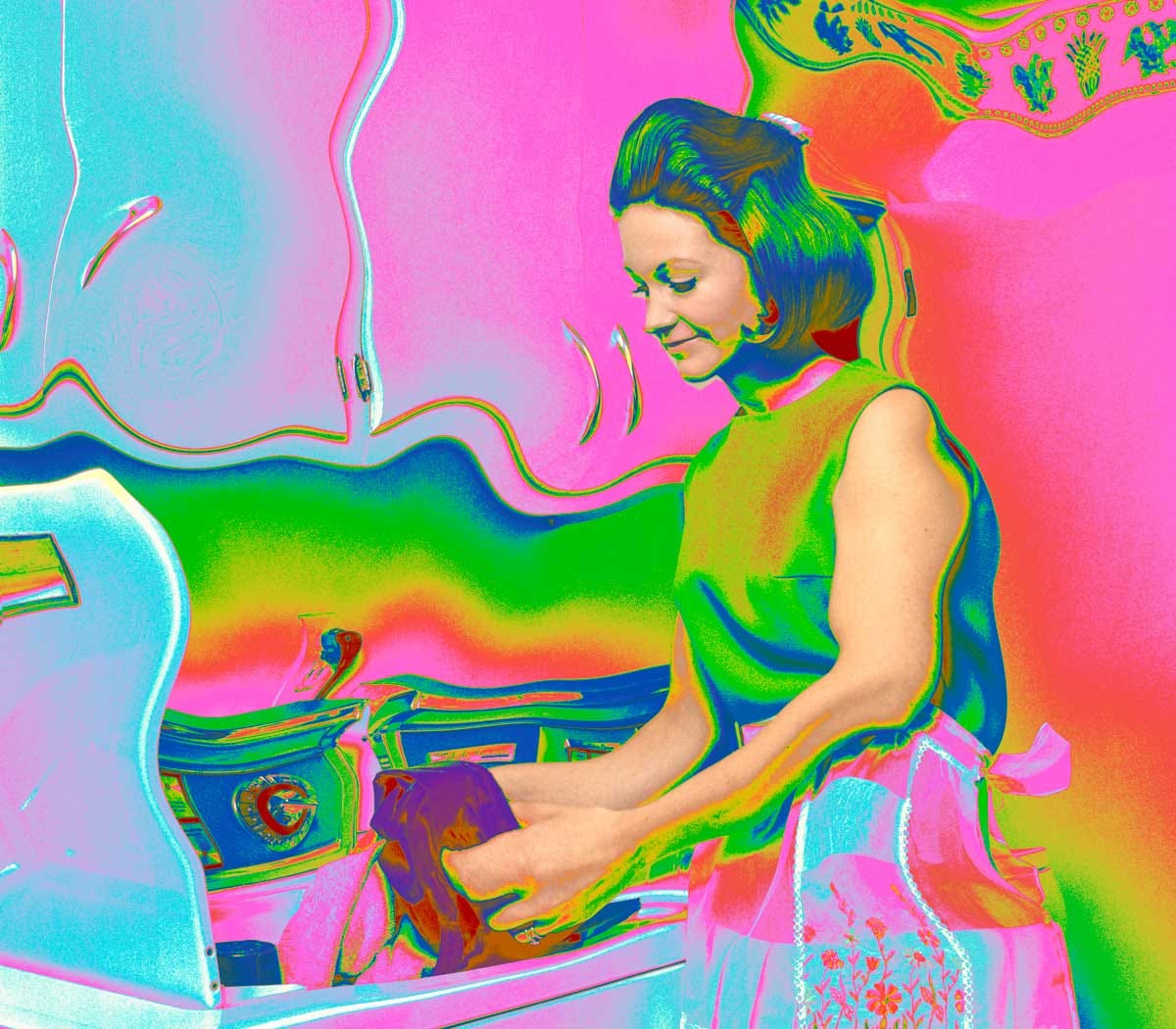Picture the platonic ideal of the millennial woman, and you’re probably thinking of someone like Rachel.
At 42, she has enviably unblemished skin and a nose piercing—nostril, not septum—in which she sports a delicate gold hoop. She’s been married for nearly two decades to her college sweetheart, with whom she has three kids under the age of 13. She worked for 10 years in the healthcare industry, before becoming a full-time mom. She rides a Peloton every morning, attends PTA meetings in the afternoons, and in her spare time, knits gorgeous, understated sweaters that look like the kind of garment Gwyneth Paltrow would wear on a trip to the Scottish Highlands.
But Rachel also has another hobby, one that makes her a bit different from the other moms in her Texas suburb—not that she talks about it with them. Once a month or so, after she and her husband put the kids to bed, Rachel texts her in-laws—who live just down the street—to make sure they’re home and available in the event of an emergency.
And then, Rachel takes a generous dose of magic mushrooms, or sometimes MDMA, and—there’s really no other way to say this— spends the next several hours tripping balls.
“Everything feels incredible. Everything tastes incredible. All your sensory experiences are really intense. Sex is incredible as well,” she told me. “If you take MDMA with a partner, it feels almost like you can accomplish what you would in, like, five years of couples counseling, in a night.”
In American popular culture, psychedelic drugs are probably best known as recreational substances beloved by the sort of dreadlock-sporting, patchouli-marinated, camper van–dweller who takes sound baths instead of actual baths and just wants to free his mind, man. But their use has sharply risen in the last decade or so; one study published in July 2024 found that the percentage of adults aged 35 to 50 who had used hallucinogens within the past year was seven times what it was in 2014. And it’s not just hippies driving the trend.
Celebrities of all stripes—from Mike Tyson to Miley Cyrus—have gone public about their love of psychedelics; Prince Harry’s memoir describes how he used them to cope with his mother’s death. And in the tech community, where optimization-obsessed men are always trying to live better through chemistry, microdosing has become a ubiquitous practice; a 2023 Wall Street Journal article called psychedelics “The Drugs that Power Silicon Valley.”
But beyond tech bros and their Hollywood neighbors, there is a less-vocal cohort of psychedelic users: high-achieving women who use these drugs as a form of self-care.
The stats are few, but the trend is observable, and nobody seems quite sure what to make of it. A fretful NPR segment about microdosing moms—also sometimes known by the somewhat disparaging moniker “mushroom mommies”—featured much hand-wringing from doctors about what could possibly be prompting women to do such a thing, including one psychiatrist who ominously pronounced that they were “basically experimenting on themselves.”
And of course, to dabble in drug use without fear of arrest or incarceration suggests a certain amount of privilege—which leads to the question of whether there’s something not just dangerous but cringeworthy about the women who patronize the loose network of ketamine clinics, holistic therapists, and “spirit journey” resorts that have sprung up to serve a more bougie breed of drug user. The website for one such luxury retreat greets visitors with a millennial pink background and a boho aesthetic sizzle reel, asking, “Are you ready to stop medicating and start healing?” Is this just a hallucinogenic variation on the $2,500 anti-racist dinner party, or the $300 jade vagina egg?

I spoke to a dozen women who use psychedelics regularly, and found them to be a diverse bunch: They come from different generations and socioeconomic backgrounds; they do drugs of different types, on different schedules, for different reasons. And despite the Goop-y vibes, none were taking psychedelics in search of a woo-woo wellness experience; indeed, many of them began experimenting with MDMA, LSD, mushrooms, or ketamine only after struggling for years within the confines of a medical system that continually failed them. Some suffered from treatment-resistant depression, or from severe anxiety, or from post-traumatic stress disorder brought on by serious trauma.
What they all have in common is a passionate belief in psychedelics as a source of healing and a force for good, one that can sometimes verge on the evangelical. They are, however, keenly aware that their zeal is shared neither by the federal government nor the average HR department—which is why everybody featured in this story has been given a pseudonym to protect their privacy. As Rachel put it: “I like having custody of my kids.”
The stigma surrounding these substances is a source of frustration, but also something many of these women understand—particularly the ones who came of age at the height of the 1990s-era War on Drugs and the accompanying government program D.A.R.E., a valiant but ill-fated attempt to transform the country’s middle schoolers into an army of tiny narcs. Rachel fully realized how much of the “just say no” messaging was based on fear rather than facts when she read How to Change Your Mind, Michael Pollan’s book about the science of psychedelics.
“I feel like we were just so lied to,” Rachel said. “Mushrooms or LSD or MDMA, the way that they were sold as gateway drugs. ‘You’re going to end up on the street and you’re going to get raped.’ But these are really impactful experiences.”
“They have changed my life in really significant ways," she added.
In this, she is not alone.

 By The Free Press | Created at 2024-10-19 10:17:33 | Updated at 2024-10-19 12:25:20
2 hours ago
By The Free Press | Created at 2024-10-19 10:17:33 | Updated at 2024-10-19 12:25:20
2 hours ago



